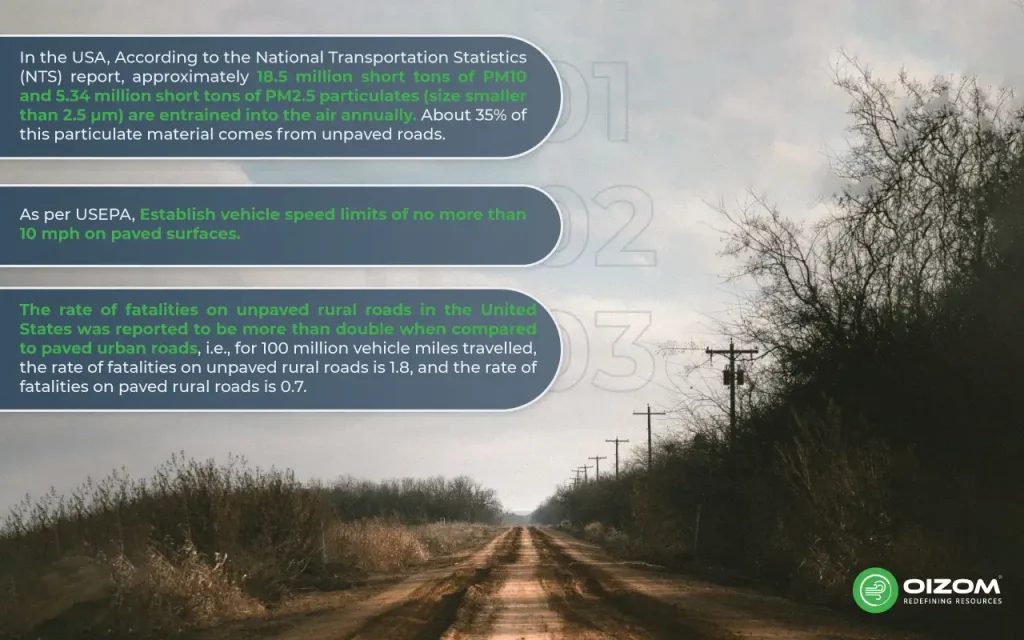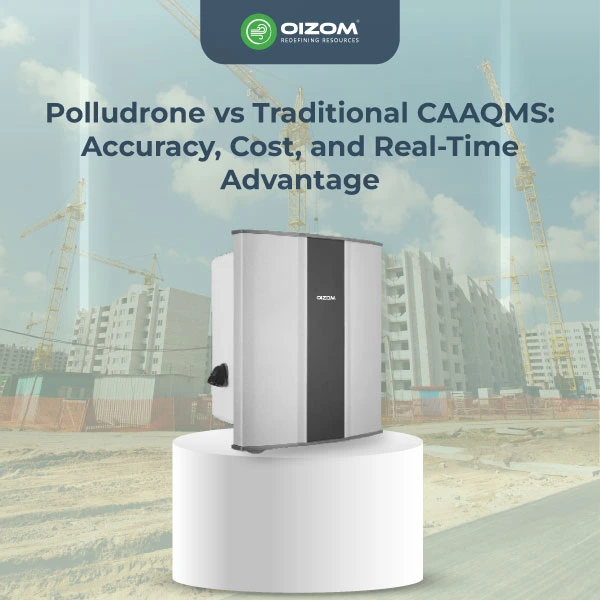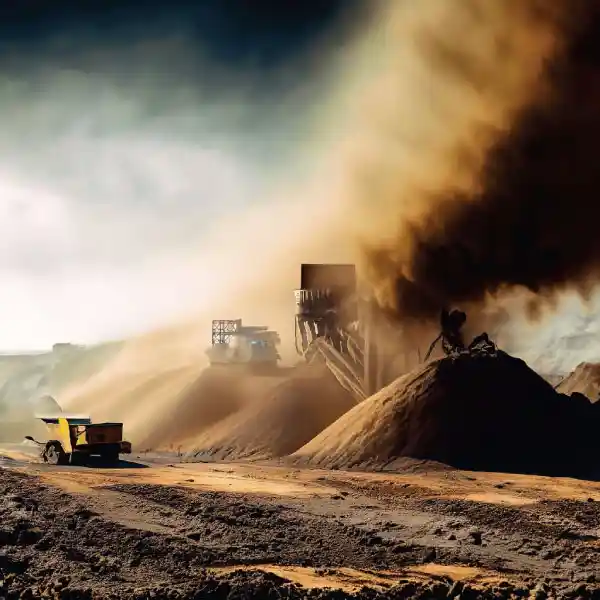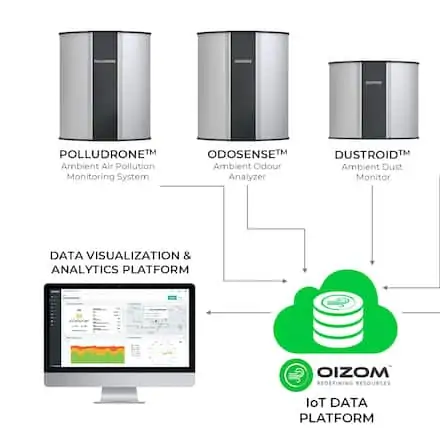The increasing concerns surrounding air quality and public health in the modern world have brought to light a pervasive environmental issue: fugitive dust emissions.
Fugitive dust is particulate matter generated in the open air (rather than through a stack) due to commercial and industrial activities. It contains both visible and non-visible airborne particle pollution.
This comprehensive guide delves into fugitive dust, exploring its effects, and the measures necessary to control its spread.

Methods to Control Fugitive Dust
Fugitive dust, a pervasive air pollution, arises from fine particles being lifted from construction sites, unpaved roads, and industrial activities. This dust is more than a mere difficulty; it poses substantial health risks and damages ecosystems. Several control methods mitigate these risks, notably at storage piles and material transfer points.
Storage Piles
Storage piles of materials like soil, sand, and gravel are significant sources of fugitive dust. Efficient dust control from these piles is essential for minimising environmental and health impacts. The following methods are particularly effective:
- Covering: Utilizing tarps or similar materials to cover storage piles significantly reduces the dust the wind carries away.
- Stabilising: Applying water or other binding agents helps bind particles together, preventing them from becoming airborne.
- Windbreaks: These structures effectively deflect wind and reduce dust emissions from storage piles.
Material Transfer Points
Material transfer points, such as loading and unloading areas and conveyor belts, are significant contributors to fugitive dust. Controlling dust in these areas is crucial and can be achieved through the following:
- Enclosures: Enclosing material transfer points helps contain dust within a controlled environment.
- Hoods and Ducting: These capture dust directly at the source and channel it to dust control systems like baghouses.
- Dust Curtains: Implementing physical barriers around transfer points can significantly prevent dust dispersion into the surrounding environment.
- Spray water or an approved dust suppressant at the conveyor feed during material transfer.
- Clean up spillage at conveyor transfer points.
Paved Roads
Primary Sources of Fugitive Dust on Paved Roads
The main problem for dust generation on paved roads is vehicular traffic. Hefty and fast-moving vehicles are more concerned and release dust particles. The extent of dust release is influenced by factors such as:
- Vehicle Weight and Speed: Heavier vehicles and higher speeds result in more significant vechicle dust emissions. As per USEPA, Establish vehicle speed limits of no more than 10 mph on paved surfaces
- Road Surface Condition: Poorly maintained, uneven road surfaces contribute to higher dust release.
- Climate and Weather: Dry, windy conditions aggravate dust generation, dispersing particles over larger areas.
Impacts of Fugitive Dust from Paved Roads
Fugitive dust from paved roads poses numerous challenges, including:
- Reduced Visibility: Dust clouds impair visibility, posing safety hazards for drivers.
- Health Concerns: These dust particles can lead to respiratory problems, especially in vulnerable groups such as children and the elderly.
- Environmental Contamination: Dust contaminates soil and water, impacting ecosystems and human health.
Effective Control Measures for Fugitive Dust on Paved Roads
- Street Cleaning and Sweeping: This removes accumulated dust, preventing it from becoming airborne.
- Dust Suppressants: Water, calcium chloride, or magnesium chloride, when applied to roads, can bind dust particles, minimising their release.
- Traffic Management: Speed limits help reduce the dust generated by vehicles.
- Vegetative Buffers: Planting trees and shrubs alongside roads can trap dust particles.
- Pavement Alternatives: Porous paving materials can reduce dust generation and improve water management.
There are several other methods for controlling the fugitive dust.
- Fugitive Dust Emission Sources – Identify all fugitive dust sources and briefly describe the measures and practices employed to control fugitive emissions at each start. Consider parameters such as predominant wind direction, frequency of activity, process operating parameters, control efficiency, and fugitive dust monitoring parameters (silt loading, silt content, moisture content and other relevant physical factors).
- Operation and Maintenance Procedures – Include operation and maintenance procedures to verify the working condition of any control measures. Specify the frequency of such practices and keep records of any maintenance conducted.
- Facility Layout – Provide a drawing showing the location of each potential source of fugitive dust at the facility. Include site boundaries, linear dimensions, and site entrance/exit locations.
- Training – Provide training for personnel responsible for implementing the fugitive dust control plan, specifying the training contents in the program.
Reporting – Deviations from the plan and/or corrective actions required to address fugitive dust emissions should be reported to the appropriate air permitting authority, where applicable.
Monitoring and Evaluation
Effective control of fugitive dust, a significant environmental and public health concern, hinges on robust monitoring and evaluation practices. These processes are vital in ensuring that strategies for managing fugitive dust are not only implemented but are also practical and adaptable to changing conditions and regulatory requirements.
Importance of Monitoring and Evaluation
Monitoring and evaluation serve several critical functions in fugitive dust management:
- Quantifying Dust Emissions: Monitoring provides essential data on dust levels, enabling the assessment of emissions over time and the impact of control measures.
- Identifying Problematic Areas: By pinpointing areas with high dust concentrations, targeted actions can be taken, optimising resource allocation.
- Evaluating Effectiveness of Control Measures: Evaluation is critical to determining whether dust reduction strategies meet their objectives.
- Adapting Strategies for Improved Effectiveness: Continuous data analysis allows for adjusting and enhancing dust control methods.
Methods for Monitoring Fugitive Dust
Several techniques are employed to measure fugitive dust levels effectively:
- Ambient Air Monitoring involves using air quality monitors to gather real-time data on particulate matter, which is crucial in assessing fugitive dust levels.
- Settled Dust Monitoring: Measures the quantity of dust falling on surfaces over time, offering insights into long-term dust exposure.
- Source-Specific Monitoring: Focuses on emissions from particular sources like storage piles, ensuring targeted dust management.
Effective Monitoring Strategies
Developing a robust monitoring strategy requires consideration of the following:
- Site-Specific Conditions: Monitoring should account for the distribution of dust sources, local wind patterns, and proximity to sensitive areas.
- Monitoring Frequency: The variability of dust emissions and the need for real-time data dictate how often monitoring should occur.
- Data Analysis and Reporting: Regular analysis and reporting of collected data are essential for understanding trends and identifying areas needing attention.
Evaluation of Control Measures
Evaluating the effectiveness of control measures is a multi-faceted process:
- Comparing Dust Concentrations: Pre and post-implementation dust levels directly measure a control measure’s success.
- Control Efficiency Calculations: These calculations help quantify the percentage reduction in dust emissions due to specific control measures.
- Regulatory Compliance Assessment: Ensuring that measures adhere to environmental regulations and standards is critical.
Continuous Improvement
Monitoring and evaluation in fugitive dust control are ongoing processes. They form a continuous improvement cycle, essential for adapting to changes and maintaining the effectiveness of dust control practices. This approach ensures that efforts to mitigate the impacts of fugitive dust remain dynamic and responsive to environmental and regulatory changes.
Conclusion
To summarise, the difficulty of controlling fugitive dust, a major environmental and public health issue, cannot be exaggerated. Fugitive dust, made up of fine particles emitted from many sources, degrades air quality, leads to respiratory diseases, reduces visibility, and affects ecosystems. The solution is a multi-pronged approach that includes preventive measures and focused management strategies.
In advocating for comprehensive dust management, we aim for a future where clean, breathable air is given, and the health of our environment and communities is not compromised by avoidable pollution. It is a collective responsibility that demands action from all stakeholders, including industry leaders, policymakers, and communities. Let us join forces in this crucial endeavour to combat fugitive dust. Together, we can protect our planet and ensure a healthier, more sustainable future for future generations.






